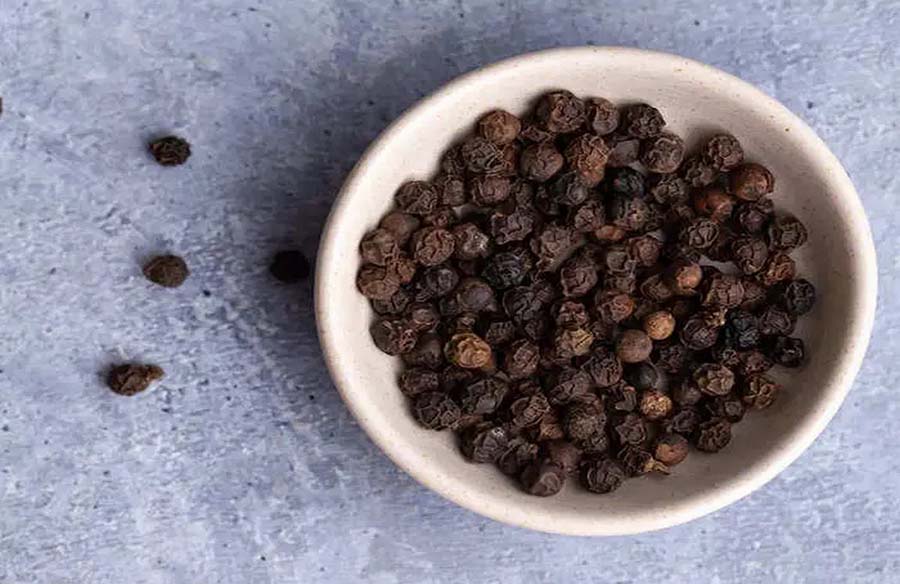Pepper: Exploring Spice, Flavor, and Wellness

Pepper, scientifically referred to as Piper nigrum, stands as one of the most beloved and extensively utilized spices globally. Renowned for its bold taste and adaptability in culinary creations, pepper also offers an impressive array of health benefits. Let’s delve into its nutritional profile, health advantages, culinary versatility, types, purchasing and storage guidelines, as well as precautions and potential side effects.
Nutritional Value
Beyond its flavor-enhancing properties, pepper carries significant nutritional value, including:
- Piperine: The bioactive compound responsible for pepper’s pungent taste and potential health benefits, such as enhancing nutrient absorption.
- Vitamins: Pepper contains essential vitamins, notably vitamin C and various B-complex vitamins.
- Minerals: It provides vital minerals like manganese, potassium, and magnesium.
- Dietary Fiber: Pepper contributes to digestive health by offering a modest amount of dietary fiber.
Health Benefits
Pepper’s benefits extend beyond the culinary realm, offering:
- Antioxidant Properties: Piperine acts as an antioxidant, combating harmful free radicals.
- Digestive Support: Pepper stimulates digestive enzyme production, aiding healthy digestion.
- Anti-Inflammatory Effects: Studies suggest pepper may help reduce inflammation, beneficial for conditions like arthritis.
- Weight Management: Piperine may boost metabolism and fat breakdown, supporting weight management.
- Respiratory Relief: Pepper has been utilized to alleviate respiratory congestion and cold symptoms.
Culinary Uses
As a culinary staple, pepper enhances numerous dishes worldwide, including:
- Seasoning: Widely used in soups, stews, sauces, and grilled meats for flavor enhancement.
- Table Condiment: Ground pepper serves as a common tabletop seasoning.
- Preservation: Historically utilized to preserve meats due to its antimicrobial properties.
- Baking: Some baked goods benefit from pepper’s depth of flavor, such as bread and biscuits.
Types of Pepper
Pepper exists in various forms, each offering unique characteristics:
- Black Pepper: Crafted from dried unripe berries, it delivers a bold, peppery flavor.
- White Pepper: Made from ripe berries with the outer skin removed, resulting in a milder taste.
- Green Pepper: Unripe berries preserved in brine or vinegar, offering a fresher, less pungent taste.
Buying and Storing Pepper
To preserve flavor, opt for whole peppercorns stored in an airtight container away from moisture and light. Maintain freshness by storing in a cool, dark location.
Precautions and Side Effects
While generally safe, pepper may pose considerations:
- Allergies: Rare but possible; seek medical attention if allergic reactions occur.
- Gastrointestinal Irritation: Excessive consumption may irritate the digestive tract.
- Interactions: Pepper could interact with medications or worsen conditions like acid reflux; consult a healthcare professional if concerned.
- Pregnancy: High doses of black pepper supplements may not be advisable during pregnancy.
FAQs
- Differentiation from Chili or Red Pepper: Pepper (Piper nigrum) is distinct from chili or red pepper, belonging to the Capsicum family with varying flavors and heat levels.
- Black vs. White Pepper: Black pepper retains its skin, while white pepper has the skin removed, offering a milder taste.
- Pepper and Stomach Ulcers: Contrary to belief, pepper doesn’t cause stomach ulcers and may even have a protective effect.
- Pepper and Heart Health: Piperine may support heart health by aiding blood pressure and cholesterol regulation.
- Pepper Overdose: While excessive consumption may cause discomfort, life-threatening overdose is unlikely.
Pepper serves not only as a culinary enhancer but also as a potential contributor to health and wellness. When incorporated judiciously, it can elevate both the flavor and nutritional profile of dishes. However, individuals with specific health concerns should exercise caution and seek professional advice when integrating pepper into their diets.











